Introduction
Before going into the details of Phototransistors, let us refresh our understanding of Sensors and in particular, Optical Sensors. From the perspective of an Electronics Engineers, a Sensor is a device that responds to a physical phenomenon or property with an electrical signal. The input of a sensor can be ay physical quantity like Light, Sound, Temperature etc. but the output is an electrical signal like voltage, current or even charge that can processed, amplifies, channelled and modified by electronic circuits and devices. The above definition of a Sensor can lead to another interpretation of Sensor i.e. a Sensor is an energy converter as irrespective of the quantity being measured, input energy is converted to electrical energy. There are many varieties and Types of Sensors like Temperature Sensor, Pressure Sensor, Humidity Sensor etc. but the sensor of interest for this discussion are Optical Sensors.
What are Optical Sensors (Light Sensors)?
Optical Sensors are also called as Light Sensors or Photo Sensors. An Optical Sensor is a device that measures the intensity of light, usually the Electromagnetic Radiation in wavelength range from Ultraviolet to far Infrared. Since atypical Light Sensor is associated with absorption of photon by the sensing material, almost all the Light Sensors are divided into two types. They are:
Quantum Sensors Thermal Sensors
Optical Sensors that fall under the quantum detectors category usually operate in the Ultraviolet to mid Infrared range of the EM Spectrum while that fall under thermal detectors operate in the mid to far Infrared range of the EM Spectrum. Photovoltaic and Photoconductive devices like Photodiodes, Photoresistors (also known as Light Dependent Resistors or LDRs), Phototransistors etc. are example of solid-state i.e. semiconductor Light Sensors of quantum detectors type.
What is a Phototransistor?
Before understanding Phototransistors, let us first briefly understand what a Photodiode is. In simple words, a Photodiode is an optical sensing PN Junction diode but in reverse bias condition so that the current is very low. When a photon of sufficient energy (hence, the dependency of the wavelength of the light) hits the photodiode, an electron is freed with an energy to pass the barrier i.e. during reverse bias, when light strikes the junction, there is an increase in the current.
Keeping this mind, a Phototransistor is a Photojunction device (so, is Photodiode) that is similar to a regular transistor except that it has a light sensitive Base terminal (or Collector – Base Junction, to be precise). In other words, a photo transistor can be considered as a Photodiode with current amplifier. A phototransistor converts photons to charge directly, just like a photodiode, and in addition to this, a phototransistor also provides a current gain. The symbol of phototransistor is shown below.
Like regular transistors, phototransistors also have large gain but the main difference is the size of the base – collector junction. In phototransistors, the size of base – collector junction is larger as it is a light sensitive region of the sensor. The larger size of the junction results in a significantly larger junction capacitance and as a result, phototransistors have low frequency response than photodiode in spite of the high gain.
Principle of Operation
The principle of operation of a phototransistor is similar to a photodiode in combination with an amplifying transistor. The light incident on the base of a phototransistor will induce a small current. This current is then amplified by normal transistor action, which results in a significantly large. Usually, when comparing to a similar photodiode, a phototransistor can provide a current that is 50 to 100 times that of a photodiode.
Characteristics of Phototransistor
As phototransistors are basically Bipolar NPN Transistors with large base – collector junction, the characteristics of a Phototransistor are similar to that of a simple BJT. Phototransistors are available as two-leaded or three-leaded devices. In a two-leaded Phototransistor, the Base terminal electrically unavailable and the device is completely dependent on light. Collector terminal is usually at a higher potential than Emitter to induce reverse bias at base – collector junction. When there is no light falling on the phototransistor, a small amount of leakage current known as Dark Current flows from collector to emitter. When there is enough light falling on the base terminal, a base current is produced, which is proportional to the intensity of the light.
The base current will then trigger the amplification process and a collector current with high gain flows. The following image shows the collector current characteristics curve.
From the above curve, it is clear that as the intensity of the light increases, the collector current also increases. As mentioned earlier, phototransistors are also available as three-terminal devices. In this case, the usage of Base terminal is optional. When used, it acts as a regular BJT and when not used, it acts as a Phototransistor.
Properties of Phototransistors
When choosing a Phototransistor, there are a few things or properties to be considered so that the phototransistor can be used at its best. Some of the important properties are:
Wavelength Linearity Sensitivity Response Time Size Cost
Let us discuss a little about these considerations. As mentioned earlier, only photon of specific energy can excite the electrons and this means that the wavelength of the light is an important factor. Phototransistor usually have a specific range of wavelengths that they can sense. Another important property of a phototransistor is the linearity of the output. How linearly the output varies according to the intensity of the light is an important consideration. Sensitivity of the phototransistor is the ratio of the output signal to the input intensity of the incident light. Also, how quickly the output responds to the changes in the intensity of the light will determine the response time. There are two other things to consider which has nothing to do with the characteristics of the phototransistor i.e. its size and cost.
Example Circuits using Phototransistors
Light Operated Relay using Phototransistor
When there is enough light falling on the phototransistor Q1, it turns ON and provides a base current to transistor Q2. As a result, Q2 is turned ON and the Relay is energized.
Darkness Operated Relay using Phototransistor
With slight modifications to the Light Operated Relay Circuit, you can implement a Darkness Operated Relay. When it is dark or the intensity of light is less, the phototransistor is OFF and this allows proper biasing of transistor Q2. As a result, it is turned ON and it energizes the relay.
Light Interruption Alarm
Using Phototransistors, you can implement simple alarm system as shown above. When the light falls on the photo transistor, which is the usual case, it is turned ON and the gate of the SCR is LOW. Hence, the SCR stays OFF. When the light is interrupted, in case of an intrusion, the phototransistor turns OFF and this provides enough potential at the gate of SCR to turn it ON. As a result, the alarm is activated and it can be reset using the switch.
Applications of Phototransistors
Lighting Control Alarm Systems Level Indicators Proximity Detectors Punch-card Readers Encoders
Comment * Name * Email * Website
Δ



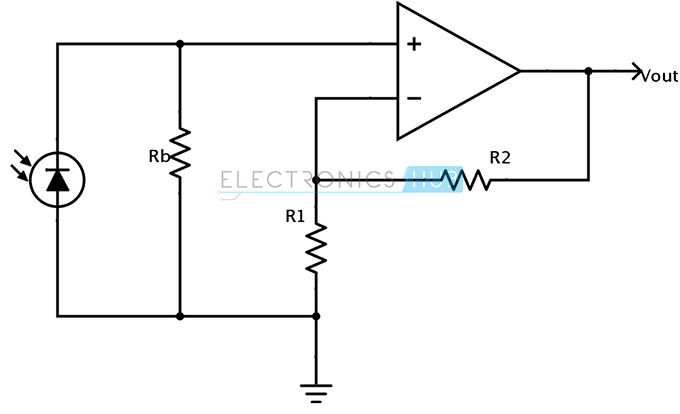
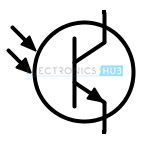
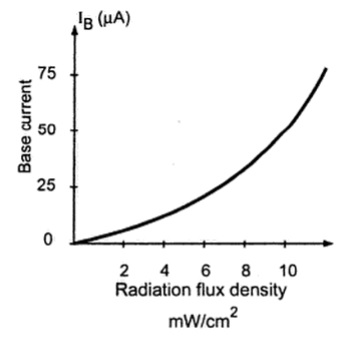
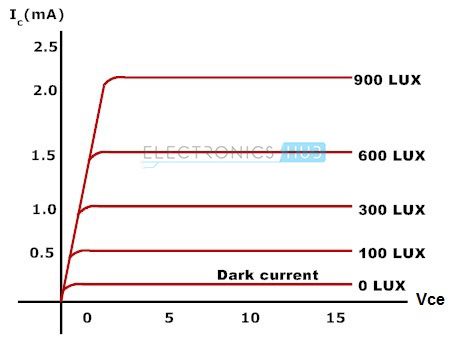
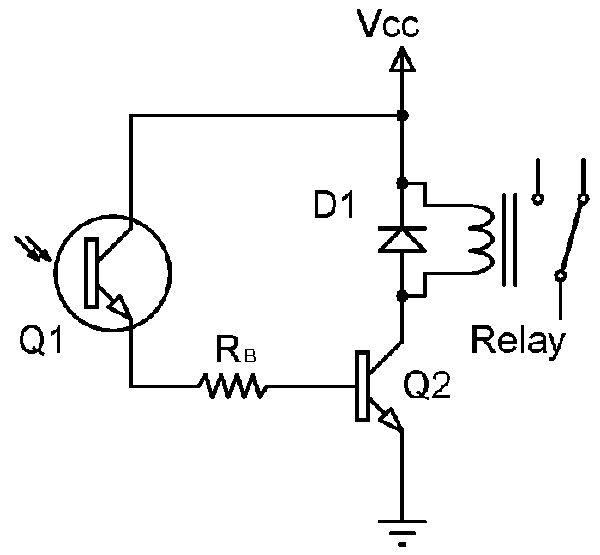
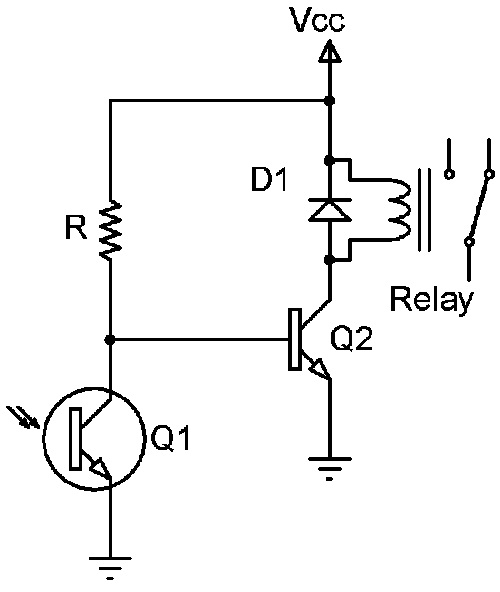
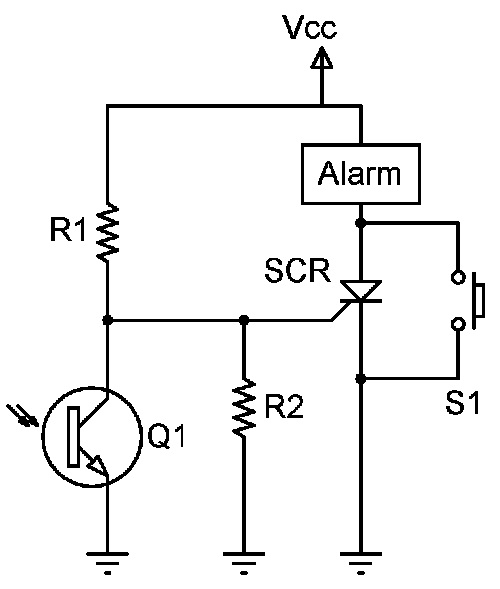


![]()